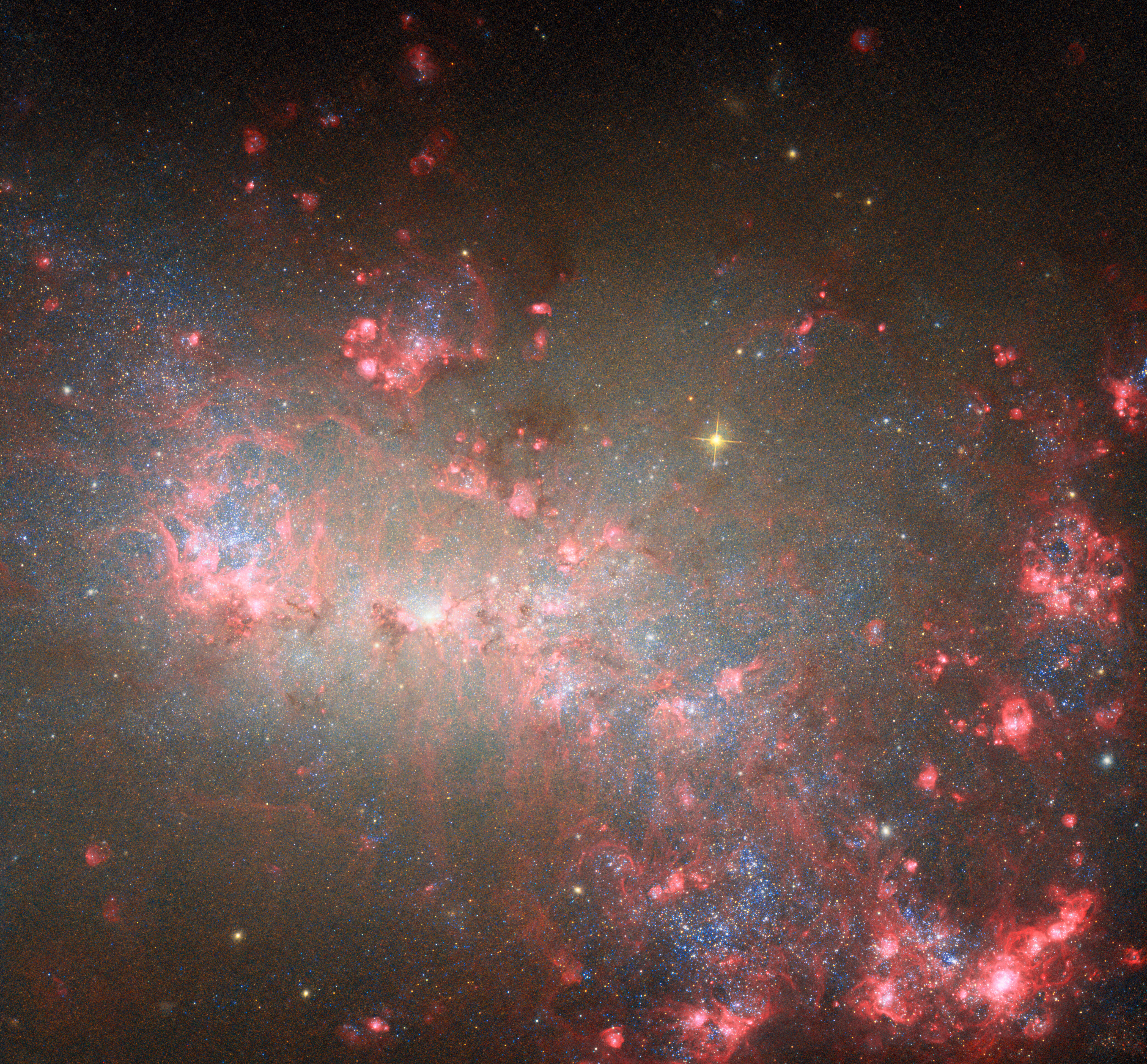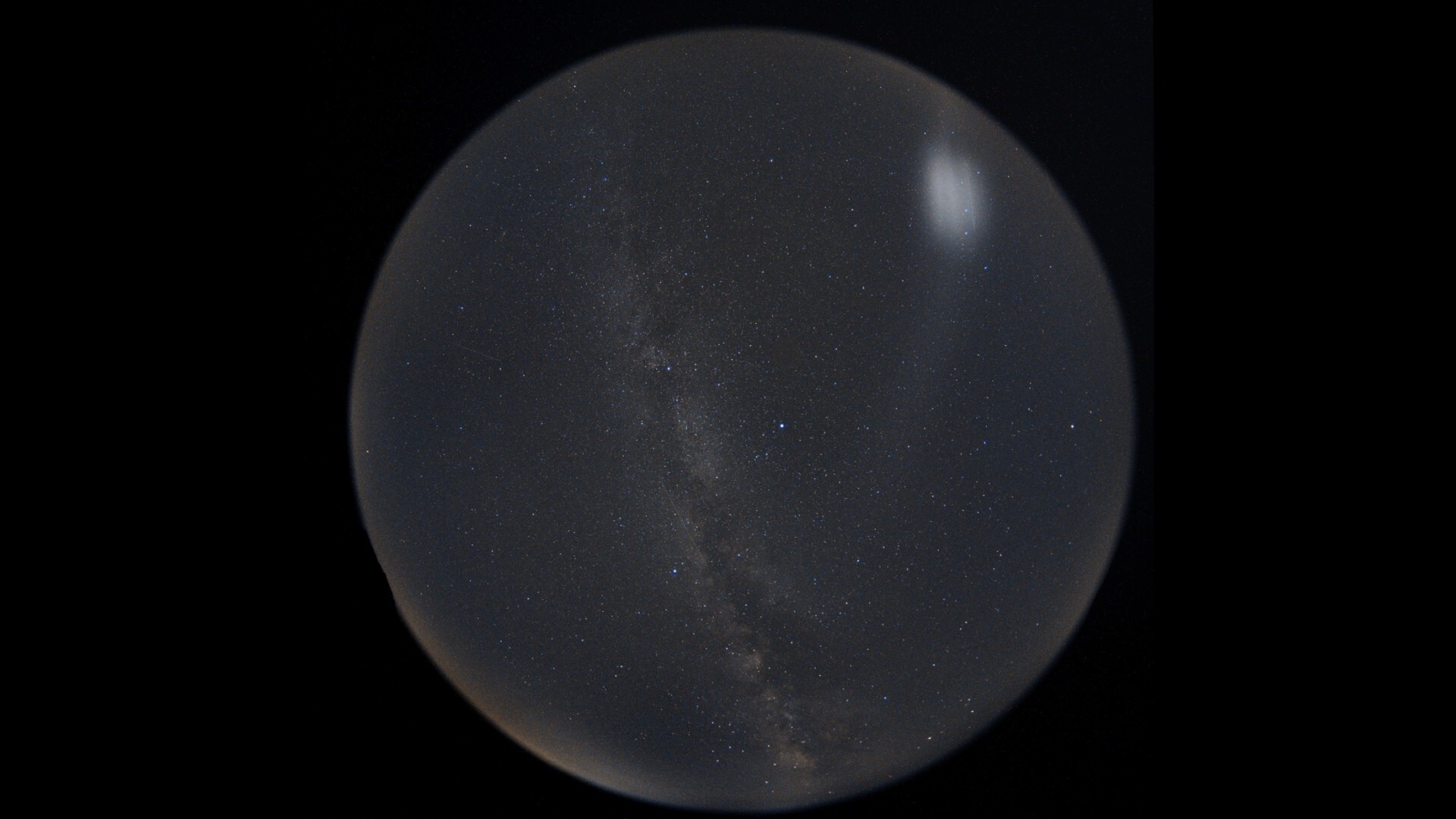Dwarf galaxy glows red in the Hunting Dogs constellation | Space photo of the day for June 25, 2025
The Hubble Space Telescope captures the dwarf galaxy NGC 4449 in the constellation Canes Venatici (The Hunting Dogs).

Deep in the constellation Canes Venatici, also called the Hunting Dogs, lies the dwarf galaxy NGC 4449. It's part of the M94 galaxy group, near a group of galaxies to which our Milky Way belongs.
What is it?
In this image, the Hubble Space Telescope recently captured the brilliant red dust and gas clouds swirling in space. NGC 4449 is classified as a dwarf galaxy, as it is much smaller and contains fewer stars than our Milky Way galaxy.
A previous photo of NGC 4449, taken by the Hubble Space Telescope, was released in 2007 but this updated version adds new wavelengths of light based on detailed observations made by the telescope, giving further insight into how NGC 4449 formed.
With these additional wavelengths, astronomers have found that while NGC 4449 might be a smaller galaxy, it is acting as a powerful stellar nursery.
Where is it?
The Hunting Dogs constellation, which hosts the NGC 4449 dwarf galaxy, lies 12.5 million light-years away, according to the European Space Agency (ESA).

Why is it amazing?
What NGC 4449 lacks in size, it's making up for in its powerful production of new stars. According to ESA, this dwarf galaxy is churning out stars at a much faster rate than expected for its size. This classifies it as a starburst galaxy.
While most starburst galaxies focus star production in their centers, NGC 4449 has new stars forming throughout, possibly due to its interaction with other nearby galaxies.
Breaking space news, the latest updates on rocket launches, skywatching events and more!
Thanks to its close proximity to Earth, the Hubble Space Telescope can more easily study how interactions between close galaxies influence how new stars are made.
Want to learn more?
You can read more about images taken by the Hubble and starburst galaxies as we continue to peer deep into the far reaches of our universe.
Join our Space Forums to keep talking space on the latest missions, night sky and more! And if you have a news tip, correction or comment, let us know at: community@space.com.
Kenna Hughes-Castleberry is the Content Manager at Space.com. Formerly, she was the Science Communicator at JILA, a physics research institute. Kenna is also a freelance science journalist. Her beats include quantum technology, AI, animal intelligence, corvids, and cephalopods.
You must confirm your public display name before commenting
Please logout and then login again, you will then be prompted to enter your display name.

